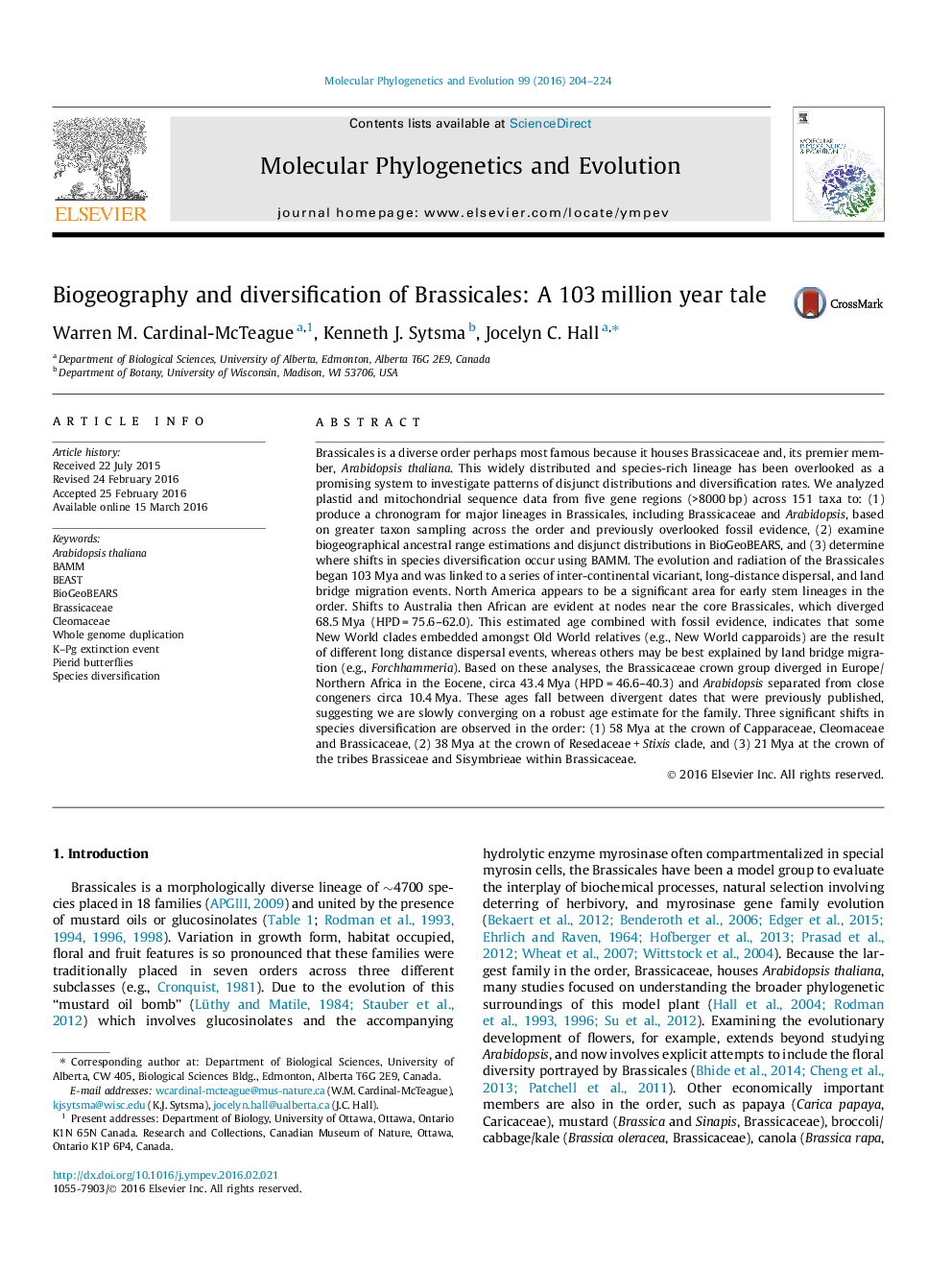| کد مقاله | کد نشریه | سال انتشار | مقاله انگلیسی | نسخه تمام متن |
|---|---|---|---|---|
| 5918529 | 1570798 | 2016 | 21 صفحه PDF | دانلود رایگان |
- Divergence times, biogeography and speciation rates estimated across Brassicales.
- Early Cretaceous (Albian) crown radiation estimated for order (~103Â Mya).
- Brassicaceae and Arabidopsis divergence estimated at 43.4 and 10.4Â Mya.
- Vicariance, land bridge migration, and long distance dispersal important in order.
- Three significant shifts in speciation rates detected with BAMM.
Brassicales is a diverse order perhaps most famous because it houses Brassicaceae and, its premier member, Arabidopsis thaliana. This widely distributed and species-rich lineage has been overlooked as a promising system to investigate patterns of disjunct distributions and diversification rates. We analyzed plastid and mitochondrial sequence data from five gene regions (>8000 bp) across 151 taxa to: (1) produce a chronogram for major lineages in Brassicales, including Brassicaceae and Arabidopsis, based on greater taxon sampling across the order and previously overlooked fossil evidence, (2) examine biogeographical ancestral range estimations and disjunct distributions in BioGeoBEARS, and (3) determine where shifts in species diversification occur using BAMM. The evolution and radiation of the Brassicales began 103 Mya and was linked to a series of inter-continental vicariant, long-distance dispersal, and land bridge migration events. North America appears to be a significant area for early stem lineages in the order. Shifts to Australia then African are evident at nodes near the core Brassicales, which diverged 68.5 Mya (HPD = 75.6-62.0). This estimated age combined with fossil evidence, indicates that some New World clades embedded amongst Old World relatives (e.g., New World capparoids) are the result of different long distance dispersal events, whereas others may be best explained by land bridge migration (e.g., Forchhammeria). Based on these analyses, the Brassicaceae crown group diverged in Europe/Northern Africa in the Eocene, circa 43.4 Mya (HPD = 46.6-40.3) and Arabidopsis separated from close congeners circa 10.4 Mya. These ages fall between divergent dates that were previously published, suggesting we are slowly converging on a robust age estimate for the family. Three significant shifts in species diversification are observed in the order: (1) 58 Mya at the crown of Capparaceae, Cleomaceae and Brassicaceae, (2) 38 Mya at the crown of Resedaceae + Stixis clade, and (3) 21 Mya at the crown of the tribes Brassiceae and Sisymbrieae within Brassicaceae.
199
Journal: Molecular Phylogenetics and Evolution - Volume 99, June 2016, Pages 204-224
